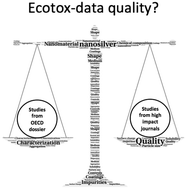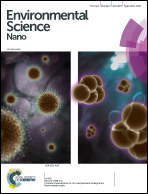Digging below the surface: the hidden quality of the OECD nanosilver dossier†
Abstract
The OECD created the Working Party on Manufactured Nanomaterials (WPMN), which launched the Testing Programme of Manufactured Nanomaterials in 2007 in order to test the applicability of the test guidelines established for chemicals on nanoparticles. After several years of testing, 11 dossiers were made publicly available in 2015. A first analysis of those data reported in these dossiers was performed by Hansen et al. (2017). They conclude that “the information in the dossiers present an incomplete portfolio of nano-material ecotoxicological evaluations that are difficult to draw substantive conclusions from and that most of the studies were not designed to investigate the validity of the OECD test guideline.” Here, we apply the criteria of the DaNa checklist to evaluate the quality of ecotoxicological data presented in the OECD dossier on silver nanoparticles and compare it with recently published data from other peer-reviewed studies. Our results show that the quality of the nanosilver dossier when considering the original studies from which data are taken is better than that which is presented in the OECD dossier. Additionally, we could not find a difference in the quality of data sources used in the OECD dossiers and data from other peer-reviewed studies. When only looking at the dossier, it is rather the quality of the reporting than the actual underlying data sources that is evaluated. Our analysis shows that the quality of those data provided by the OECD testing programme is at least equal to that of non-OECD studies. Overall, these data may be useful in future nanotoxicological evaluation studies.



 Please wait while we load your content...
Please wait while we load your content...